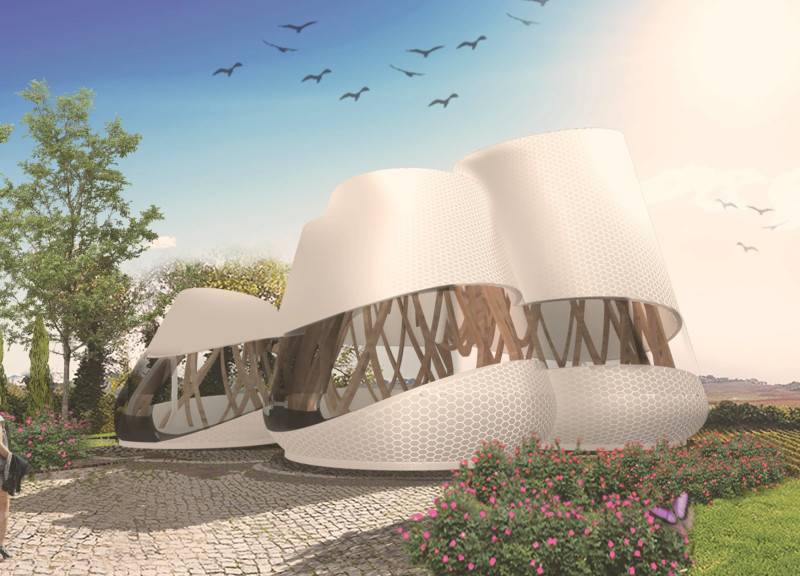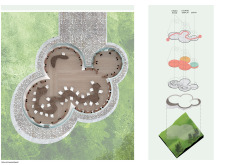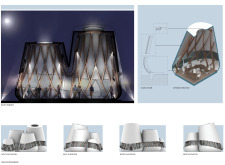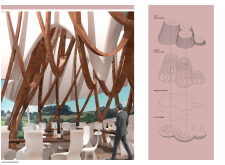5 key facts about this project
SAÚDE STATION is a design that captures the essence of wine tasting through a thoughtful approach to architecture. Located in a vineyard setting, the building functions as a place for tastings and education about wine. The concept revolves around the sensory journey that one experiences when discovering a new wine—starting from visual appreciation, moving to scent identification, and culminating in tasting. This flow enhances the connection between the space and the art of winemaking.
Design Concept
The design features forms that resemble a wine glass, tilted at angles to encourage different views. This orientation allows light to pour into the building from multiple directions, creating a lively atmosphere inside. The play of light is intentional, highlighting the fluid nature of the wine tasting experience and enhancing the interaction for visitors within the space.
Spatial Configuration
Visitors approach the building through a narrow entry that leads into larger areas, revealing wide views of the vineyard outside. This transition from a confined space to an open one reflects the unfolding of flavors that wine offers. The layout supports both private tastings and larger gatherings. It encourages social interaction while also allowing for a deeper appreciation of the vineyard’s history, which is thoughtfully integrated into the interior design.
Central Interaction Space
A prominent feature of the building is its main table, which has a curved shape and serves as a gathering point for visitors and the Sommelier. This design helps facilitate conversations, whether in larger groups or smaller, more intimate settings. Each seating arrangement maintains visual connections to the vineyard, ensuring that everyone enjoys the scenic views. The communal aspect of this layout reflects the joy associated with wine tasting and the connections that people make during these experiences.
Exterior Aesthetics
The exterior of SAÚDE STATION is marked by simple and unique cladding that fits well within its environment. Large glazed openings allow glimpses into the complex interior. This design choice emphasizes what lies within while maintaining a good relationship with nature. The exposed structural elements further highlight the sensory experiences that wine can provide, linking the design to the overall theme of winemaking.
Light, structure, and form come together in a design that embodies the traditions of winemaking. Visitors have the opportunity to engage deeply with the art of wine tasting and enjoy an immersive environment that connects them to the vineyard and its story.






















































